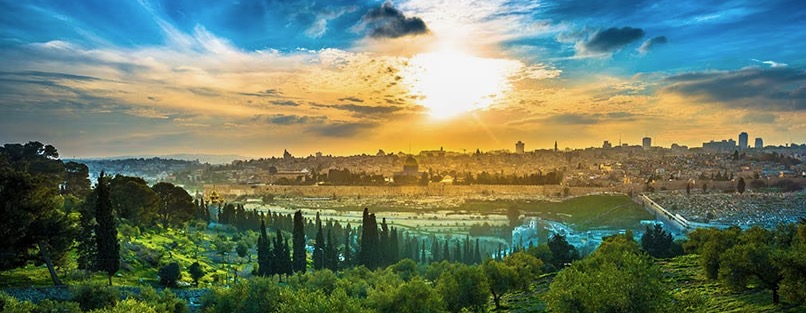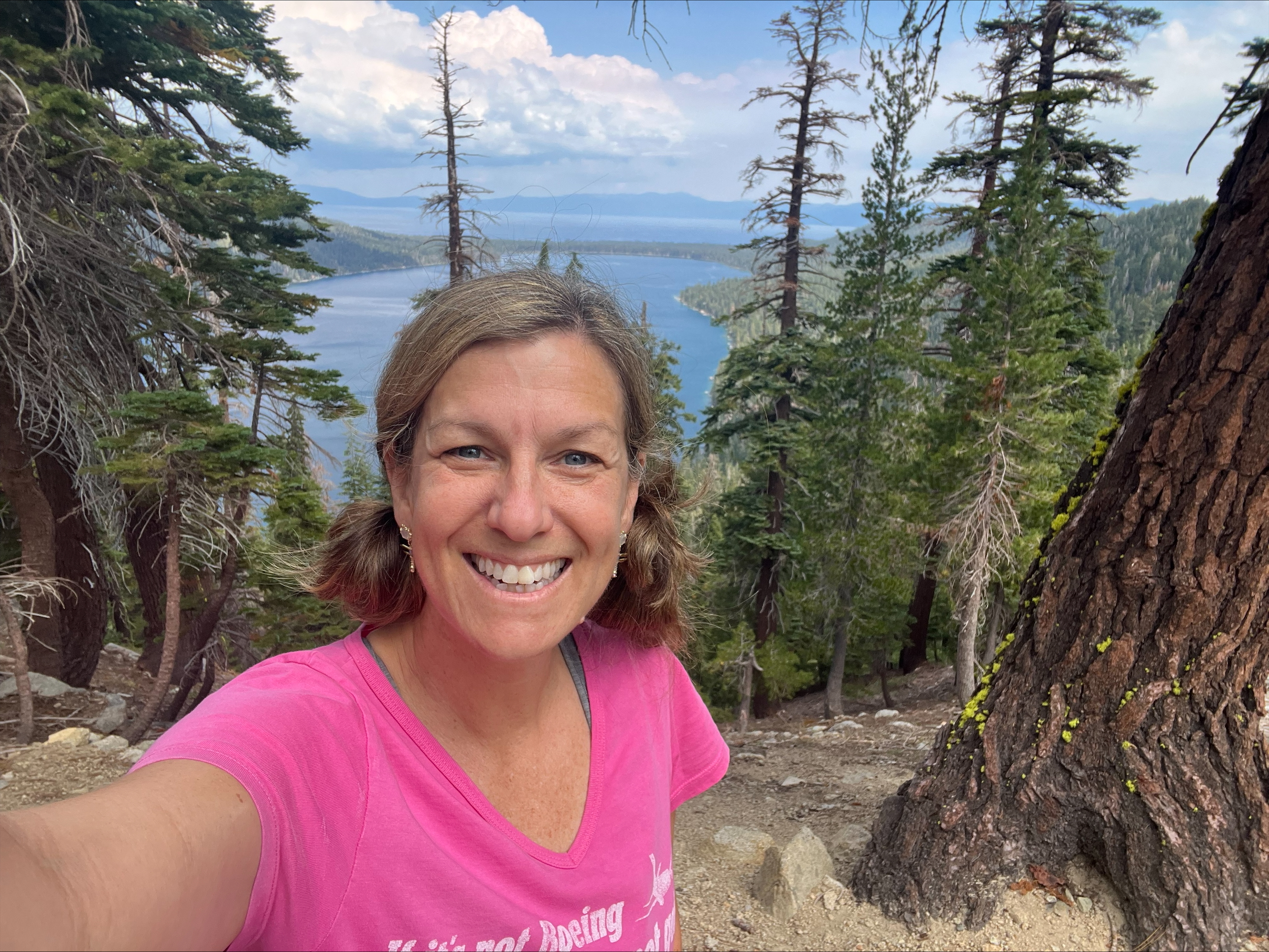This Advent, the Revised Common Lectionary shifts from the Year A sequence to the Year B sequence. Lucky us—this means the first passage we will face when the new liturgical year begins on December 3 is Mark 13, sometimes known as the “Little Apocalypse.” Oh goodie. Persecution and destruction, abomination and running for the hills. Get ready for some warm and fuzzy Advent cheer!
I’ve been studying Mark 13 because I’ve been asked to discuss it next week with a couple other guests for the Green Lectionary Podcast. An endeavor of Creation Justice Ministries, the podcast seeks to help preachers read the Bible with ecological intelligence. So far, we guests have had some rollicking good fun doing real-time, group midrash on the lectionary. I highly recommend checking out the episodes released so far.
But what to do with this whiz-bang of a passage from Mark, where Jesus instructs the disciples about impending doom? Oof.
The first question we ask each other on the podcast is: Where is creation in this passage? In this case, the answer is: right under the disciples’ feet. Jesus leads the disciples from the city up to the Mount of Olives in v. 3. The disciples had been in Jerusalem, marveling over the temple—so big! so amazing! And Jesus says, “Yes, well, all this will be destroyed” and leads the gang to a place of perspective “opposite the temple.”
So they sit there, outside, under the olive trees (and perhaps some handy figs?), and talk about false prophets, rumors of wars, earthquakes, famines, persecutions, betrayals, sacrilege, refugees, darkening of the heavens, and the coming of the Son of Man. All of this prompted by the disciples’ question: “Well, when will this temple destruction thing happen?”
At first, it seems as if Jesus contradicts himself in this chapter. First he says, “such things must happen” (v. 7) as if he is about to offer a specific timetable to the disciples, and then (v. 32), he goes into the whole “No one knows the day or the hour” business. But actually, the whole first part of the chapter does not constitute much of a “sign,” at least not the kind the disciples wished for. The things Jesus describes—they are always happening somewhere.
In fact, they’re happening today. Do we face deceptive and false prophets, even in the church? Yes, we do. Wars and rumors of wars? Check. Nation against nation, earthquakes, famines, families divided? Check all of the above.
As RJ readers know, I spend a lot of my time these days reading climate news. One could make a plausible argument that we do, finally, in this generation, truly face the End Times. All of history, no doubt, is packed with suffering and conflict and destruction, but this—this is really it.
Reformed people are not known for huddling on hillsides, mapping Bible verses to current events and watching for Jesus’ feet to poke out from under the clouds. So I usually don’t much fuss with end times prophecies or imagine we’re there. However, I admit, these days, it’s rather plausible. Humans are so numerous and so powerful now, that we have the power to ruin the planet’s ability to support life, at least life as we know it. We’re on our way to doing that, in fact.
So when verses 14-19 speak of unprecedented crises which drive desperate people “to the hills” without warning or preparation, we might think of today’s climate refugees, fleeing floods or wildfire or drought. Maybe this really is the moment Jesus was predicting. The fig tree is budding: see the signs! The desolation is near, right at the door!
The commentaries I’ve read are helpful in suggesting what some of Jesus’ references might have meant to the early readers of Mark’s gospel. The “abomination that causes desolation” in v. 14, for instance, is a quote from the book of Daniel. Maybe for Mark’s readers, it referred to the statue of himself that the emperor Caligula wanted to erect near the Jewish temple? Or maybe it referred to some guy named Phanni who was installed as high priest about 70 CE, a guy whom Josephus considered a real clown?
And what about the bit about the sun and moon being darkened, stars falling from the sky, heavenly bodies being shaken? Warren Carter, in the Wisdom commentary, notes that heavenly bodies were essentially gods in the world of the Roman empire: “Heavenly bodies were understood to sanction the empire and its rule.” So the disruption described in vv. 24-25 could be seen as predicting the toppling of imperial rulers and a restoration (through the Son of Man) of God’s created order.
In the end, of course, scholars disagree (as usual) on what all these references mean. However, they do agree that for Mark’s audience, they were certainly meant to point to real events in their own generation, to the machinations of history sweeping over this small group of believers who were definitely wondering: how do we live when everything seems to be falling apart?
Which brings us back to our day. The thing about apocalyptic passages like this is that they are not limited to a single set of historical references. Instead, they pull back a veil to reveal how things always work.
I have never forgotten a little moment in the 2008 novel by Russell Rathbun called Post-Rapture Radio. It’s a weird work of fiction, a satirical yet tender novel written back when all the cool churches were “emerging’’—remember that? The novel’s central character is called “Idiot John,” and he serves as a kind of modern avatar of John of Patmos. At one point in the novel, another character asks John, “Is this the end of the world?” And John replies, “It usually is.”
It usually is.
Perhaps Mark gives Jesus this long discourse in chapter 13 in order to help all of us live at the end of the world, because we always are. If we have spent our comfortable lives believing in prosperity and progress—so that these days we wonder what happened to our accustomed sense of security—well, welcome to the contingent reality that most of humanity during most of history have known all too well.
So how do we live? The chapter’s main lesson is this: Don’t be fooled by “apocalyptic fervor,” and don’t get all caught up in it. Instead, keep watch, stay faithful, preach the gospel.
Perhaps we should also take instruction from Jesus’ position when he delivers this discourse: outside, opposite the temple. In other words, we need some perspective on our religious institutions. We know very well how susceptible they can be to deceptions, false prophets, disintegration. As Lamar Williamson in the Interpretation commentary notes, Mark 13 marks “the end of the Jerusalem ministry and the final disqualification of the Temple as focal point of the Kingdom of God.” Today, too, we are wise to refrain from equating God’s redemption with religious institutions.
A little time attending to the more-than-human creation may help with that perspective. And perhaps—I know this is a bit of a stretch—we also need to run to the hills now and then and pay attention to fig trees. Let’s hope to do this not as desperate refugees but as astute observers to what hills and trees and everything else in this creation have to teach us. Even amid fears and turmoil, our task is to be faithful to our originary vocation as humans in the garden, described by Hebrew scholar Ellen Davis as to work and serve creation, preserve and observe it. After all, if we are going to preach the gospel, we had better preach the whole gospel, which includes God’s redemptive purposes—as Romans 8 and Colossians 1 remind us—for all creation.
So: pay attention, but keep doing our jobs. Perhaps you know the famous rabbinical saying from Rabbi Yohanan ben Zakkai: “If you have a sapling in your hand, and someone should say to you that the Messiah has come, stay and complete the planting, and then go to greet the Messiah.” Turns out the good rabbi actually lived during the Jewish-Roman war of 66-73, an event to which Mark 13 is often thought to refer directly. I hope the rabbi was indeed talking about actual trees, but I assume he wants us to receive this wisdom metaphorically, too.
The turmoils of history must come. Our moment in history is both new and not new at all. Our faithful tree-planting, whatever form that takes, may or may not be effective. We can only trust that the Son of Man will come to repair the world and find us busy working on that project already, by the power of the Spirit’s inspiration. It’s not quite Advent yet, but never mind: Come quickly, Lord Jesus.
Image credit: elal.com/magazine





